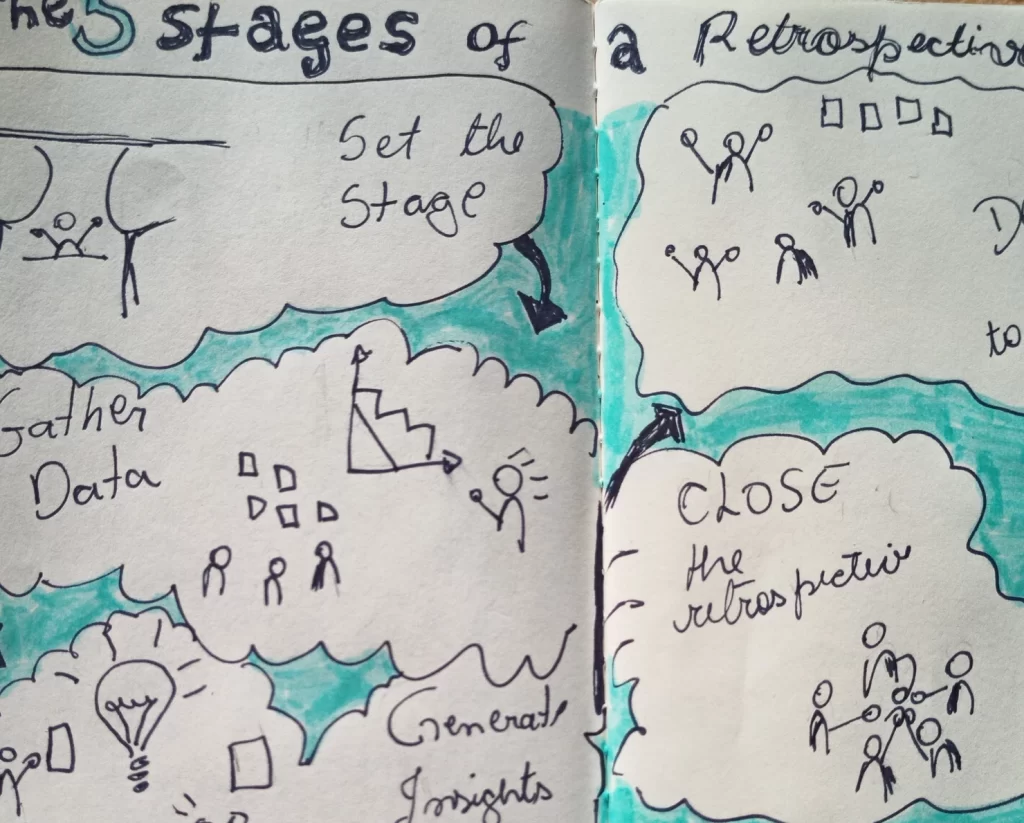
Hands down, this is my favorite Agile principle. Having been a developer, team lead, having coached a team, I believe this one applies on all fronts. This is the principle that talks about motivation and trust. Here’s what the Agile Principle #5 says:
“Build projects around motivated individuals. Give them the environment and support they need, and trust them to get the job done.”
Let’s dissect the manifesto in our usual manner to understand what it looks like in the day-to-day.
Motivated individuals
Motivated people are engaged in doing their best job. They are eager to share their ideas, try new things, and make things work. When people want to take part in projects there is truly no limit to what is possible. Have you ever been part of a team that was excited to get to work, where all interactions were useful, and you felt personally accountable for the result? Maybe it was not even at work, but some project with your community or friends? How did you feel in that team?
That’s what this principle talks about! Harnessing that kind of energy and creating a space of creativity, accountability, and getting the job done. People want to be fulfilled at work; they want to be proud of what they achieve. Everybody wants that, even seemingly disillusioned individuals. If you don’t believe me, I have a book for you to read on that: Drive, by Daniel H. Pink. In there he explains what builds motivations for humans: mastery, purpose, and autonomy and I believe this applies so well to this Agile principle.
Are you starting to see the importance of this principle for companies to achieve their business outcomes and become more customer-centric? To be fast, innovative, and adaptive, the level of commitment from individuals needs to be beyond just showing up every day and punching a card. And people are excited for that. They go on their commute every day; they are away from their loved ones for hours. Those working hours better count on making their lives more impactful!
In Agile, we want to choose people that want to work on the project with us, people that are somewhat engaged either in the technology, in the final goal, or excited to work with the other teammates. They must have an element of motivation that is theirs, intrinsic. And managers and coaches should nurture that!
Now, motivation alone cannot go far if you don’t have the next piece.
Support and environment
You might be happy and excited about your new project. You show up today and… you have no computer ready for you. That’s ok, you are a trooper and intelligent. So you look for your new colleagues and discover they are all busy in other meetings… because actually, they are partially helping you. And this turns out to be the beginning of a downward spiral for the project and your participation in it.
What do you think is going to happen with the motivation in this scenario?
We can’t expect people to fight for projects and products and services as if it was more important than their own lives. And we can’t expect them to find unstoppable energy to keep fighting this uphill battle. Eventually, people leave either the project or the company. Or they become jaded and remain in the project but just work robotically. Have you seen one of those people? Have you ever been one of those? I know I have!
Managers in organizations should work hard to avoid wasting away the motivation of their people. It is precious and difficult to recover. And without the proper environment, things take longer to be developed and people are more prone to error because they can’t use proper tools and automations, which in turn makes the job more stressful and the results have poorer quality.
So, the lack of support and proper environment looks like this: teams don’t have access to other people, they work with subpar tools and are expected to be as fast as if everything was automated. Maybe their manager has very little time to spend with them, maybe they constantly hear “NO”. It is rather deflating to be in the constant fight for resources. It is tiring. It diverges that creative energy that should be spent in the actual project… to things around the project.
And the worst piece of support to be missing is this next one.
Trust
It’s the one thing you expect when you are hired, when you are invited to a new project. You hear people like how you work. They like what you’ve done in project XYZ. Or maybe you passed a scrutiny process to be part of the company as a new hire. It is only expected that they will trust you to get the job done.
Yet we still see a lot of micromanagement around Agile teams. They have to report hours in a certain way, and they have to produce or consume certain reports, and they can’t deploy on certain dates but they have to deliver by this date, and… well, and it is not proportional to support and tooling they receive. Managers end up having more control over their teams than the team themselves have over their own tasks. There is a lot of telling people what to do and how to do it from the top-down, in what can be recognized more as an adult-child relationship.
Even adopting Agile in those “Agile Transformations”, if you allow me to be spicy. Someone comes up and decides: here’s what we’ll do. We’ll adopt SAFe or <insert_your_framework_here>. These decisions end up coming from high above in the hierarchy, where folks already lost a clear understanding of how things are actually developed. But these things cannot be detached, because Agility has everything to do with people’s ways of working.
While I’m not suggesting that the employees decide how all the work should be done, managers and coaches should strive to create an environment where adult-adult relationships are established. I trust you and you trust me. And just for the record, let me state right here that there are actually some for-profit companies out there living some sort of flat hierarchy and manager-less life such as Semco and Morning Star and Buurtzorg.
The focus on people and interactions
The Agile principle #5 is probably the stronger one anchored on people and interactions. It reminds us to value the humans at the center of the production. We can’t generate awesome valuable products and services for humans out there while disregarding the humans that are creating those. Customer-centricity starts with employees. It should just be renamed to human-centricity. Period.
The sad reality once more is we do see this picture today in organizations. I have seen many “Agile Transformations” teams that seem to adopt Agile at first glance, but that are not in fact Agile, because they are missing living this principle. This is an organizational lack, not simply a team dysfunction.
In Agile you want people to be happy and engaged in their projects and their work. Without this, there is no “Agile” being done in an organization, no matter what they say, even if they mention words like scrum and kanban. So, yeah, you don’t want to randomly assign people to do things they don’t like. It’s in the company’s best interest to have a mechanism for people to have some sort of choice on how they apply themselves into the productivity chain.
We also need to understand that a company is not operating in an Agile mindset when they don’t offer an environment that is supportive for morale, for quality work, respecting their people as humans, and ultimately trusting that people have good intentions and will get work done. And trusting also that when people fail, with the proper environment and support around them, they can correct the failures and learn from it. Coming out even stronger, more motivated, in a virtuous cycle where the whole company wins.
What the Agile Coach can do
As we close, I will ask you not to get discouraged about the discrepancy of what Agile thinking brings to workspaces versus what you are experiencing now.
I do understand the feelings, I’ve had those myself before, but think of it this way: that’s exactly why you are here! There is a problem for you to help solve. An improvement for you to lead. In most companies, people think all they need is post-its and weekly meetups and you are here to help them see how it’s all beyond that.
So here are some ideas for you to develop with your teams and departments to help them live the Agile principle #5:
- Don’t just tell people what to do. It works for managers just assigning tasks and it works for you as a coach. Lead the way by explaining what you see and what are some better ways of working an their benefits.
- Explain the why. Once again, help managers express the why so that people join forces fully motivated and aware of their impact in projects. It also works for you, the coach, as you teach or coach on a concept, a technique or challenge what you see.
- Create mechanisms for the how to be co-developed. It’s easy to think that you can stop in the why: part of the support and environment also involves not letting people all alone in figuring out the path ahead. Also, managers and employees both need to understand what it looks like to co-create solutions, as I bet most of them are not used to it.
- Pay attention to empty “Agile ceremonies”. What are those, you ask? People meeting every two weeks following a strict plan and calling it a sprint; or having people just adding tickets in Jira and calling it a backlog; or retrospective items never being inspected (despite long and hard discussions). These do not constitute Agility.
- Help information flow both ways. Help managerial information come out so that teams can make better educated decisions and lighten the bureaucratic burden on teams by helping managers and PMO think how they can simplify accounting and budgeting without making it a team “task assignment” problem.
- Invite fun and playfulness. Yes, work also needs space for breathing, for out-of-the-box thinking, and sometimes plain human interaction. People need to have time to just interact with each other without feeling guilty or thinking they are “just chatting” or “just thinking time”. And work sessions can be out of the ordinary, using unusual facilitation techniques and materials. Not only do we have people feeling valued and connected, but maybe the company can even collect a few new ideas for future products.
Give some more thought on how would you show up to help your teams and your whole department or organization live this Agile principle. I’d love to hear what your thoughts are!



